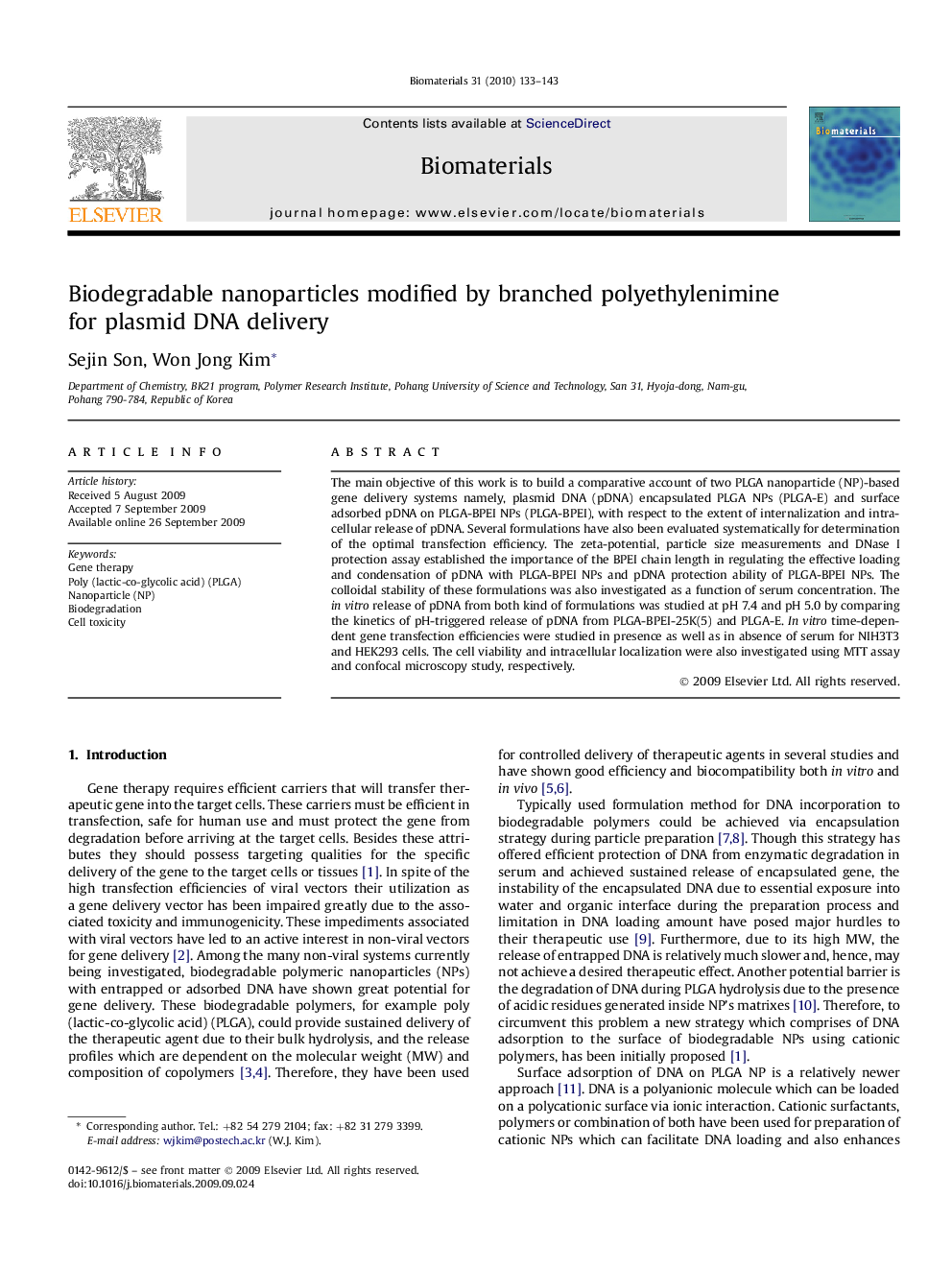| Article ID | Journal | Published Year | Pages | File Type |
|---|---|---|---|---|
| 10032 | Biomaterials | 2010 | 11 Pages |
The main objective of this work is to build a comparative account of two PLGA nanoparticle (NP)-based gene delivery systems namely, plasmid DNA (pDNA) encapsulated PLGA NPs (PLGA-E) and surface adsorbed pDNA on PLGA-BPEI NPs (PLGA-BPEI), with respect to the extent of internalization and intracellular release of pDNA. Several formulations have also been evaluated systematically for determination of the optimal transfection efficiency. The zeta-potential, particle size measurements and DNase I protection assay established the importance of the BPEI chain length in regulating the effective loading and condensation of pDNA with PLGA-BPEI NPs and pDNA protection ability of PLGA-BPEI NPs. The colloidal stability of these formulations was also investigated as a function of serum concentration. The in vitro release of pDNA from both kind of formulations was studied at pH 7.4 and pH 5.0 by comparing the kinetics of pH-triggered release of pDNA from PLGA-BPEI-25K(5) and PLGA-E. In vitro time-dependent gene transfection efficiencies were studied in presence as well as in absence of serum for NIH3T3 and HEK293 cells. The cell viability and intracellular localization were also investigated using MTT assay and confocal microscopy study, respectively.
